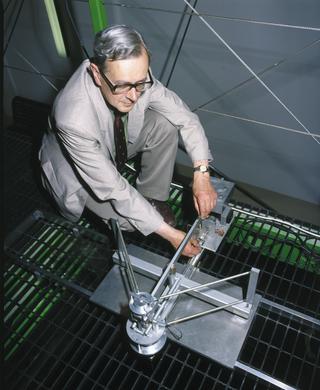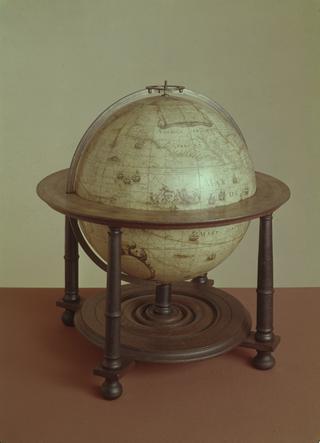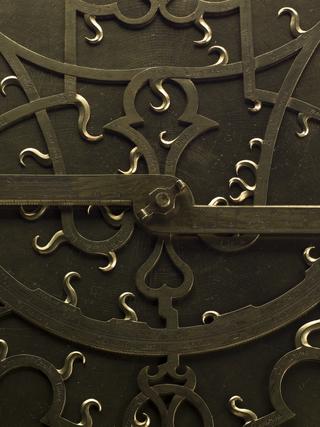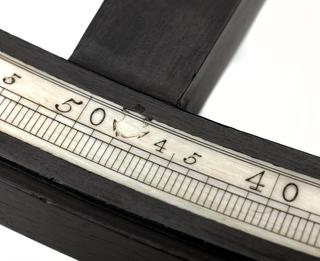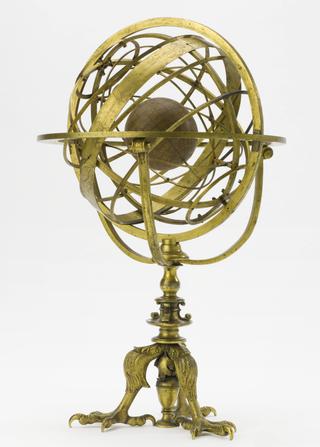


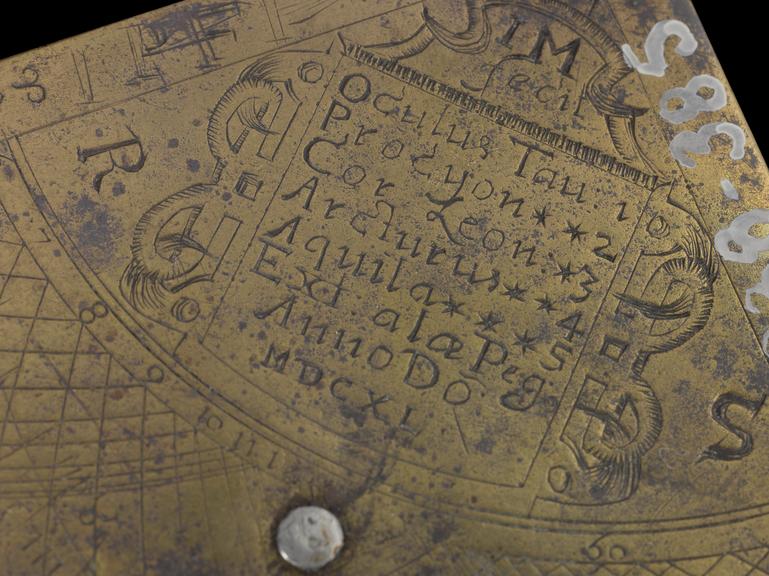
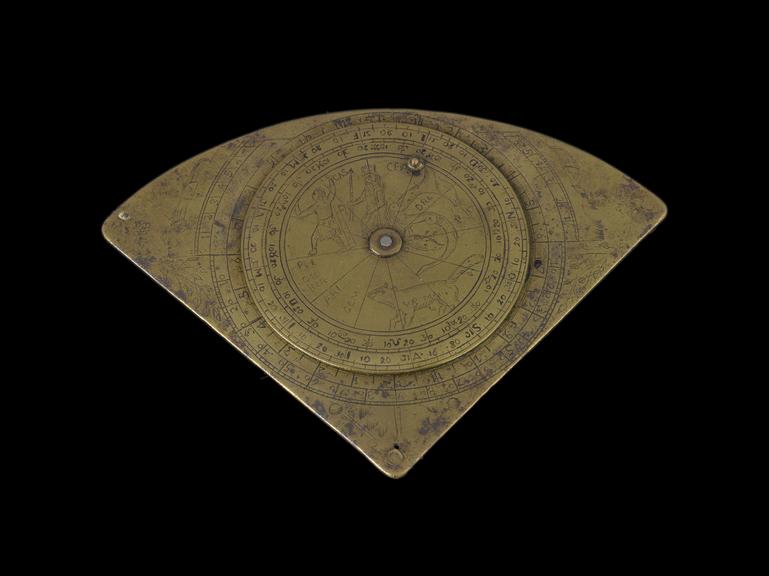
Brass Gunter quadrant (3-inch radius) signed J M, probably John Marr, and dated 1640 with degree and trigonometric scales and volvelle on reverse side.
This is an unusual instrument, which combines a standard Gunter quadrant on one side with an unusual nocturnal on its rear, for telling the time, etc. during both day- and night-time. The Gunter quadrant had been invented 20 years earlier by the Gresham Professor of Astronomy, Edmund Gunter (1581-1626).
Use of the nocturnal on the rear of the instrument is as follows. Because the constellations on the volvelle are shown in mirror-image to how they appear in the sky, in use, the nocturnal is held flat in the hands, with the user looking down on it like a book, rather than above the user’s head. The names of the reference stars in the star table on the front of the quadrant are listed in order of increasing right ascension. They have been chosen because they are bright and easily locatable features of the northern hemisphere night sky which ring the north celestial pole at about the same declination of 15 degrees and are evenly spaced apart in right ascension by about 4 hours (on average) between each successive pair. They therefore divide up the night sky into six roughly equal segments. Similar tables of star names can be found on other, comparable instruments. One of these stars, chosen according to which one of them is most readily visible (depending on the time of year), is used as a reference star when using the nocturnal.
The objective when using the nocturnal is to match the orientation of the circumpolar constellations shown on the volvelle to the appearance of the stars in the sky at the time of use. The current time can then be read off as the time indicated on the scale surrounding the volvelle which aligns with the current date on the scale around the circumference of the volvelle. The time this indicates will only be accurate to within about 20 minutes at best, because of inherent inaccuracies in using such a small instrument.
The pin on the volvelle allows the user to orient the volvelle by touch in the dark so that the constellations shown on the volvelle correctly correspond to the appearance of the stars in the sky at the time of use.
To orient the base plate correctly, the instrument must be aligned with the 12 o’clock positions of the hour scale parallel to the local north-south meridian. The two sighting pins on the base plate help to achieve this. Holding the instrument horizontally, the user aligns the sighting pins with the chosen reference star.
Use of the nocturnal presupposes knowledge of the appearance of the northern hemisphere constellations.
Details
- Category:
- Astronomy
- Object Number:
- 1938-385
- Materials:
- brass
- Measurements:
-
overall: 5 x 75 x 75 mm
- type:
- gunter quadrant
- credit:
- Mr W.E. Miller
